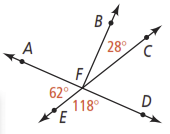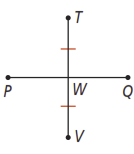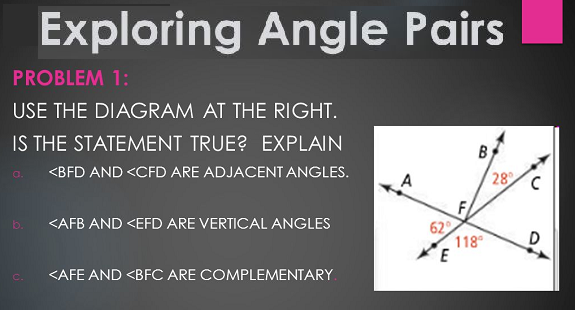Lesson 4: Exploring Angle Pairs
Unit 1 Lesson 4: Exploring Angle Pairs

Lesson Overview
Angles and Angle Relationships
What You Will Learn
- How to identify and describe angle pairs
Overview
 In this lesson, you will learn how to describe different angle pairs. You will demonstrate your understanding by identifying and defining the angle pair relationships.
In this lesson, you will learn how to describe different angle pairs. You will demonstrate your understanding by identifying and defining the angle pair relationships.
Essential Understanding
Particular angle pairs can help you identify geometric relationships. You can use these angle pairs to find angle measures.
This course is based on a textbook that is viewable by clicking on the textbook icon. Keep the textbook open while you go through the lesson so that you may refer to it throughout the lesson.
Additional Resources
Lesson 4: Exploring Angle Pairs
Proceed to the Next Page
Prepare for Application
Instructions

You have now studied Exploring Angle Pairs. It is now time to demonstrate your learning.
Try the activities below on your own. You should be able to answer these before beginning the practice.
Do these activities in your journal.
Activity 1
Use the diagram below to determine if statements 1-4 are factual. Explain.

- and are vertical angles.
- and are supplementary.
- and are adjacent angles.
Activity 2
Use the diagram below for questions 1-4. Can you make each conclusion from the diagram? Explain.

- is a right angle.
- bisects .
Activity 3
1. Look in the example for Problem 3 on page 36. How can you check these results?
2. and are a linear pair. and . What are and ?
a. What do you know?
b. What do you need?
c. What is your plan?
d. What is your solution?
Activity 4
bisects . If , what is ?


